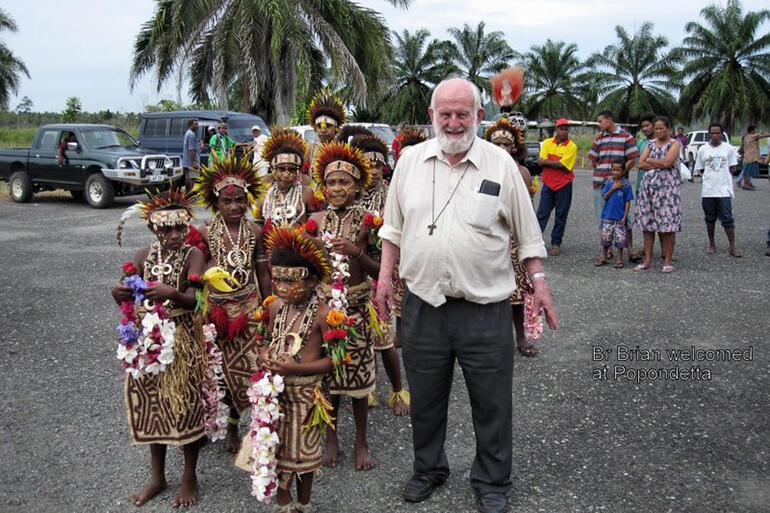
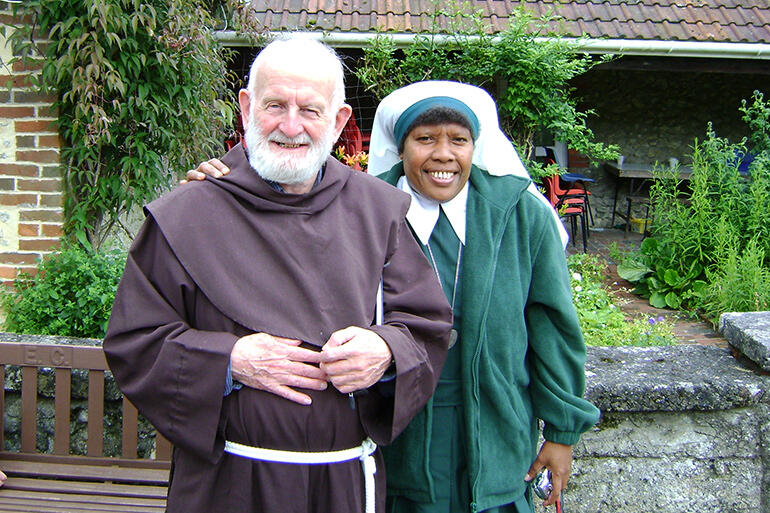
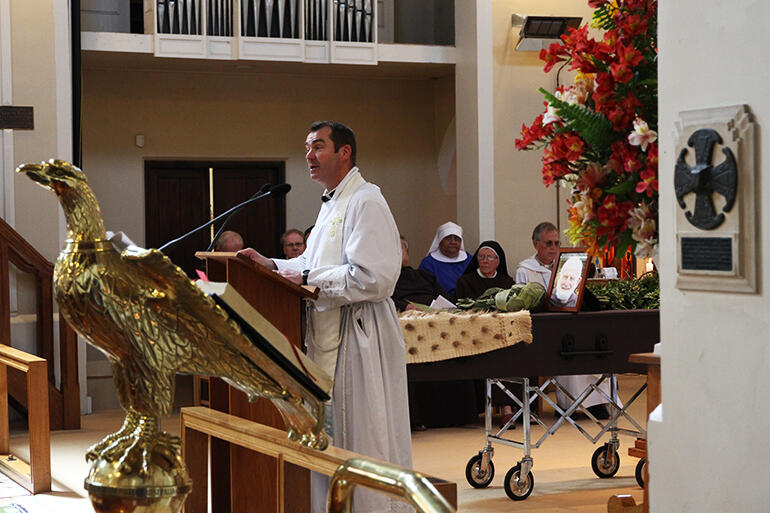
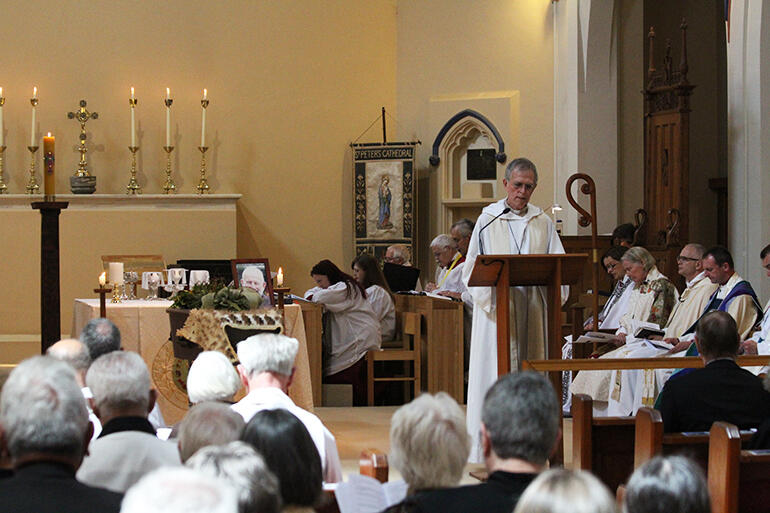
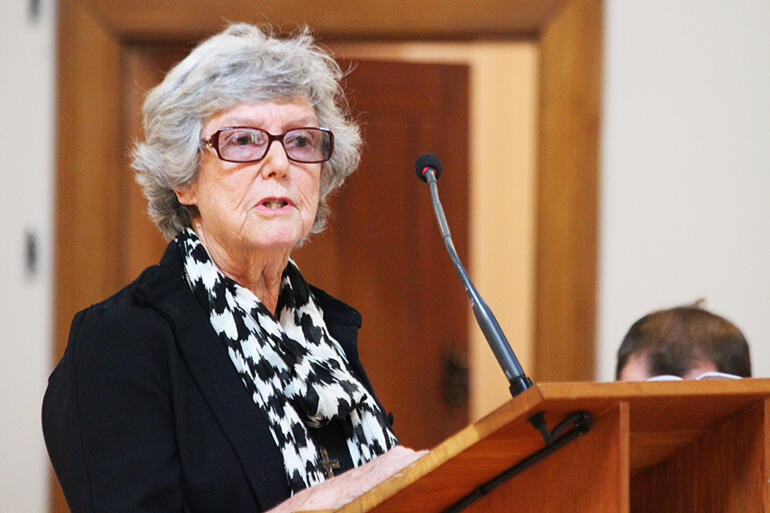
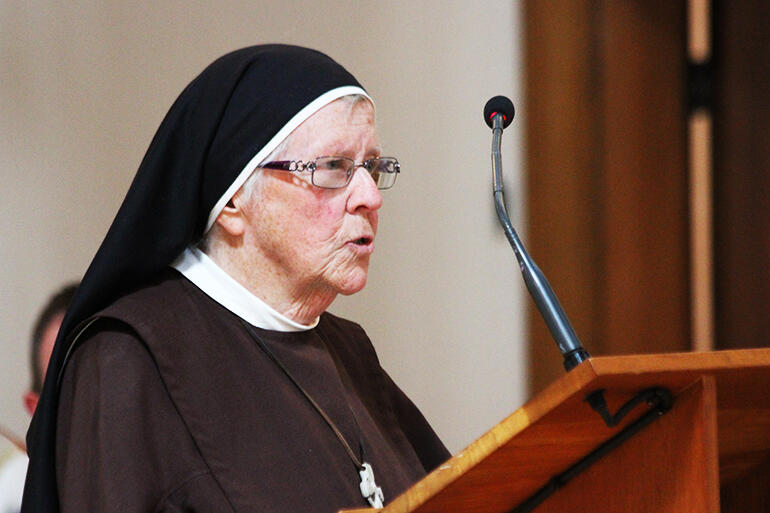
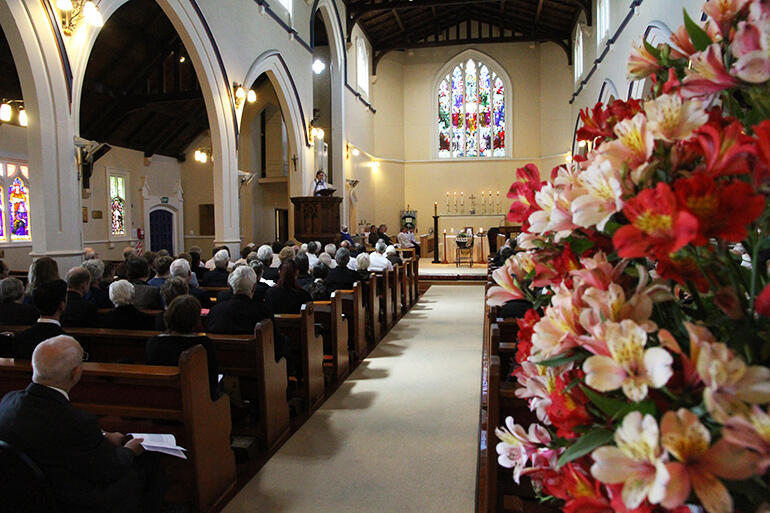
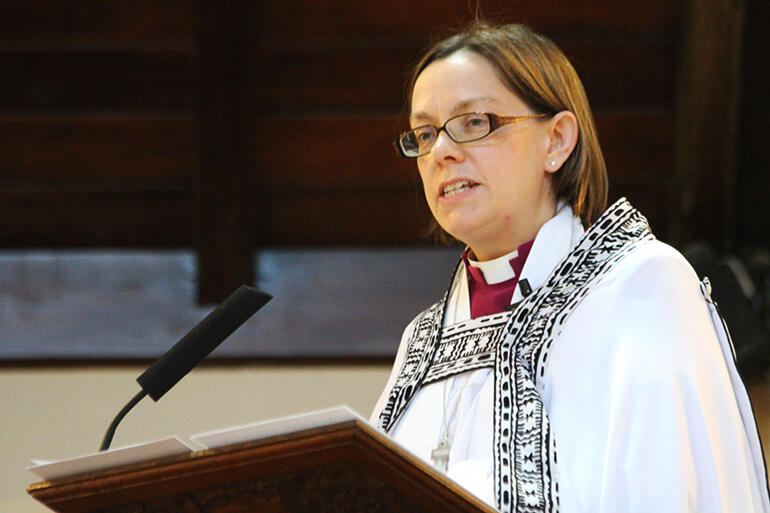
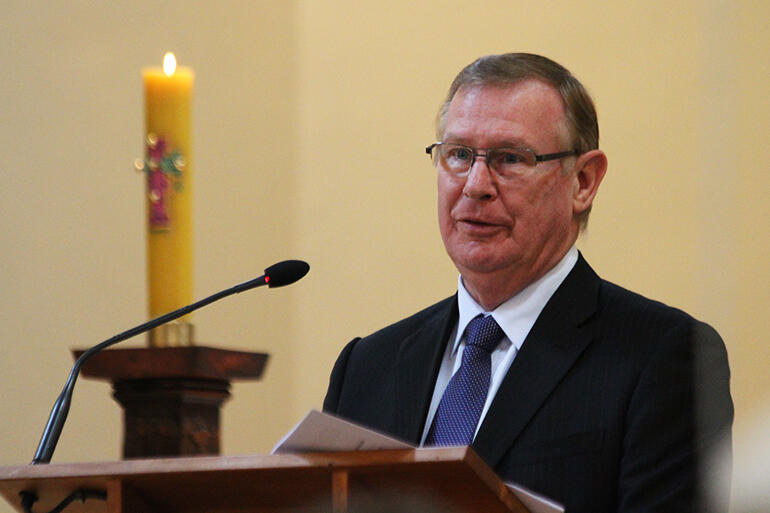
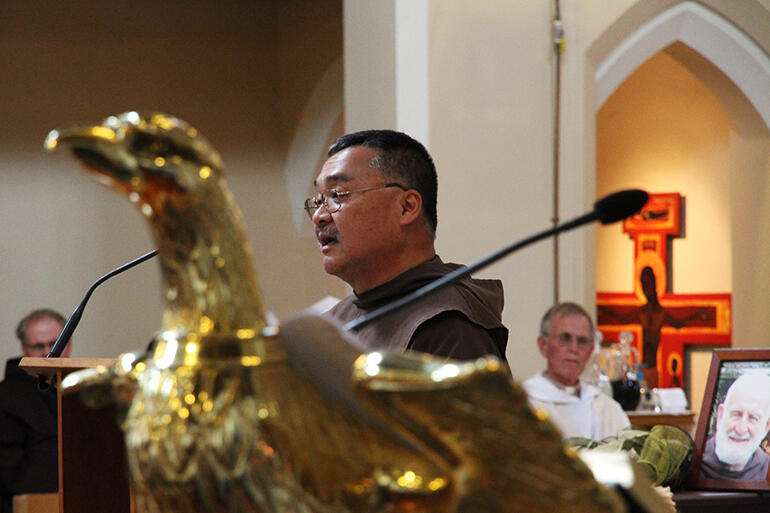
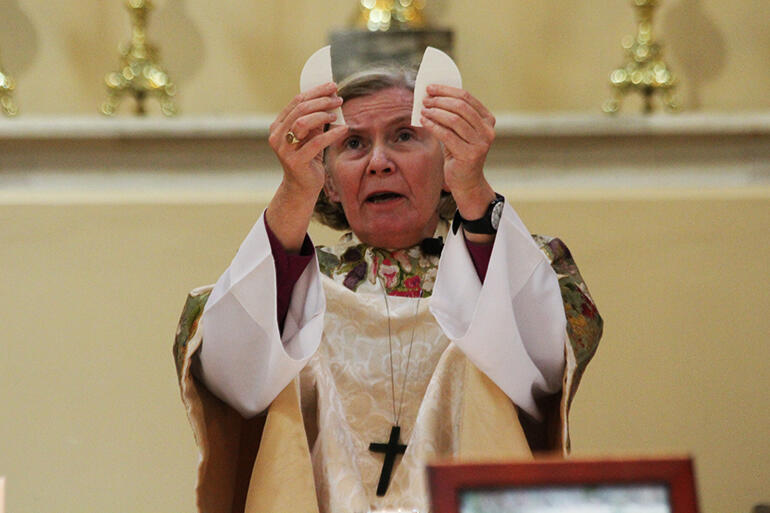
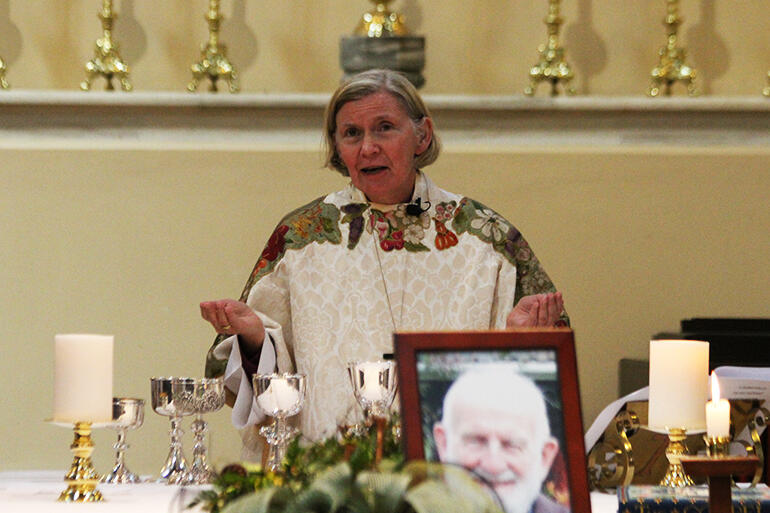
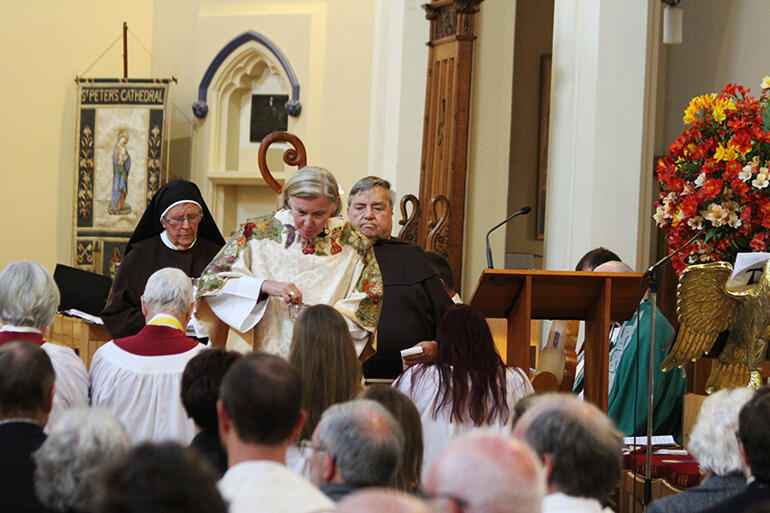
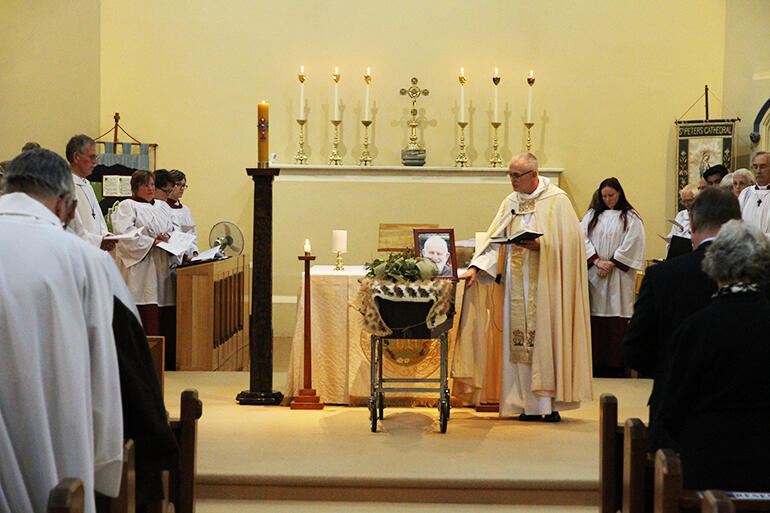
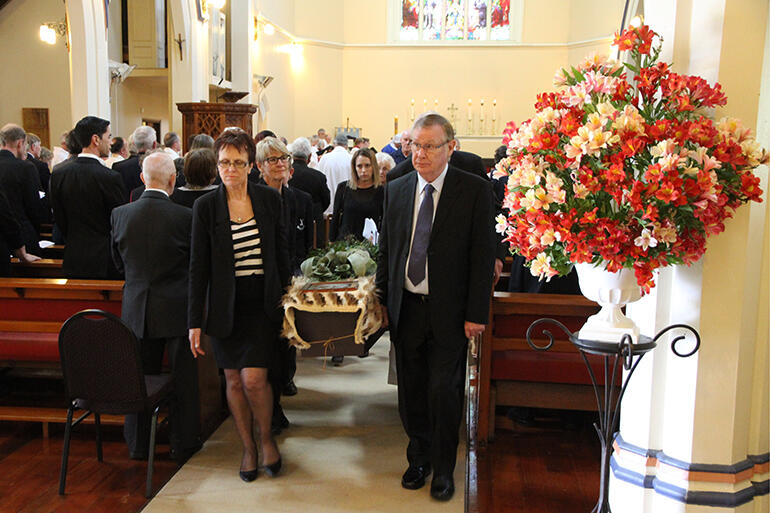
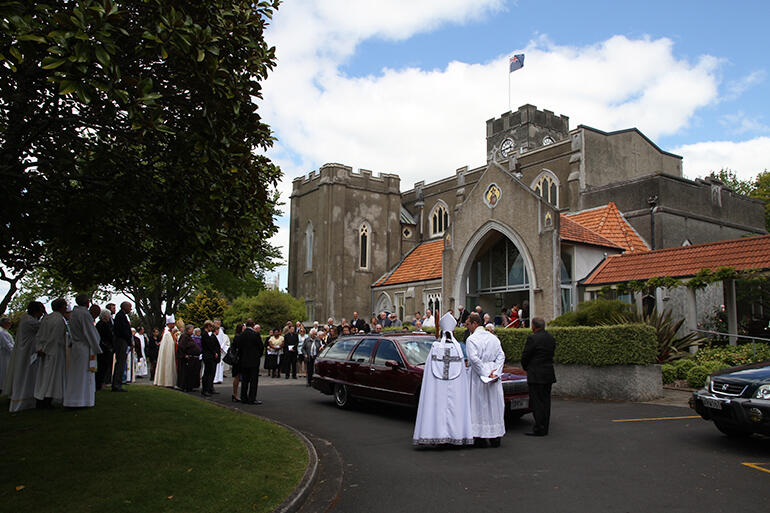
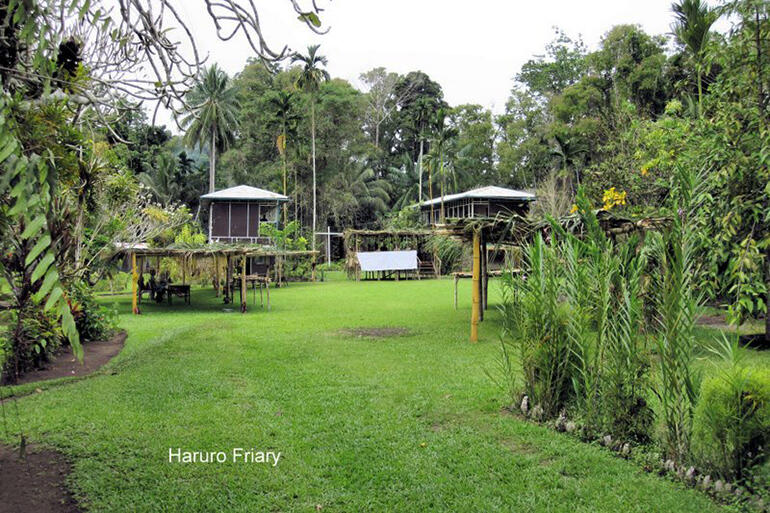
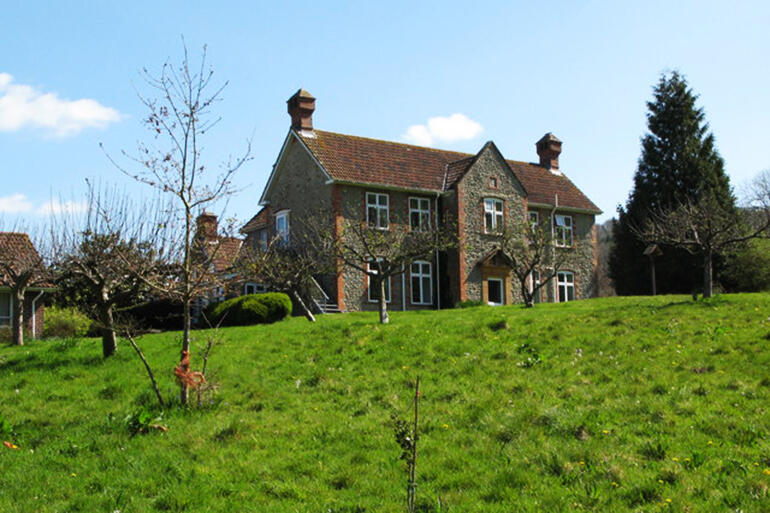
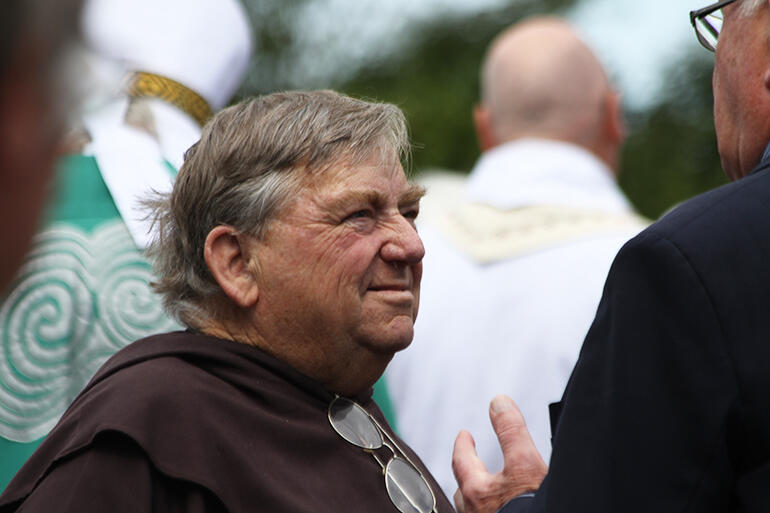
About 200 people turned up at Hamilton’s St Peter’s Cathedral this afternoon to farewell Br Brian Harley, a 90-year-old Franciscan Friar who spent the last 10 years of his life at Hamilton’s Friary of Divine Compassion.
When you consider that Br Brian had long had a love of what he called a “semi-erimitical life” – a life hidden from view, significantly devoted to contemplative prayer, and that he lived in a hermitage within the Friary…
That turnout shows you the impact that he had not only in his immediate environment of the Diocese of Waikato, but also on those within this province and the Communion at large who choose to follow in the way of St Francis.
Because there were, at his sendoff, a good number of overseas visitors clad in the simple brown habits with the white three-knotted cord around their waists that the Friars wear, as well as three religious sisters and a large turnout of lay folk from within New Zealand who belong to the Third Order of St Francis (TSSF) – who live ‘normal’ lives, in other words, but who choose to follow a Franciscan rule.
Consider the geography
You’ll have a better understanding of the love and affection Anglicans in the Waikato held for Br Brian if you know where the Friary is located.
It’s slap bang in the middle of Te Ara Hou,which is a social service community in Hillcrest.
Bishop Helen-Ann Hartley touched on the Friary’s significance to Te Ara Hou in her sermon, which also reflected on the chosen gospel reading, Matthew 25: 31-40
“The kaupapa at the heart of this Gospel is one that is lived out each and every day in the village… the hungry are fed, the thirsty are refreshed, visitors are welcomed, the naked are given clothing, and those in prison are visited and valued.
“The constancy of the rhythm of prayer that Brothers Brian and Damian, Phil (Rev Phil Dyer, TSSF) and others maintained was the heartbeat of the Gospel message that Anglican Action and the other agencies in Te Ara Hou bear witness to each day: te ara hou,a new way: the Gospel offers just that, a new way of seeing the world around us because of what God has done in Jesus Christ.
“Simply to know that prayer was happening created an aura beyond the horizons of daily life. Br Brian was at the heart of that, and even in his frailty there was a strength that you knew was sustaining and at times, life-saving.”
Br Brian was involved in priestly ministry at the friary, and further afield, and he engaged in spiritual direction and conducting retreats.
But he wasn’t bloodless and ethereal. Far from it. In the tributes paid to him today – by Bishop Helen-Ann, by Br Alfred Boonkong, SSF, and by his nephew, Mr David Harley – a picture emerged of a man who was not only endlessly prayerful and patient, but also one who laughed easily, was witty and cheerful, a cricket devotee, a music lover...
And a man who had lived a remarkable life.
War and peace
Brian Mortimer Harley was born in Bristol in 1925, the son of a well-to-do solicitor dad and home-carer mum, who belonged to an Anglo-Catholic parish.
In 1943 Brian joined the Navy and served first on what he called a “Woolworth’s” aircraft-carrier – a merchant navy ship which had been converted to become an aircraft carrier, and which escorted convoys in the Atlantic and the Mediterranean.
Later in the war he served on an MTB – a fast torpedo boat which operated off the coast of Scotland and in the English Channel.
After he was demobilised, he applied for ordination, and he studied theology at King’s College in London. He was deaconed in 1953, and ordained to the priesthood on Trinity Sunday 1954.
While he was at King’s College he began to feel called to the religious life.
“It was the Franciscans that I came across in East London who attracted me”, he wrote a few weeks ago. “I had volunteered to help in a night school which they ran for seamen from other parts of the world… and I did this sometimes every Friday evening.
“I felt I had grown up in a fairly privileged kind of home and background; I was enjoying college life and sport but I wasn’t really doing anything for the marginalised or poorer people.
“So that’s what attracted me to this night school. And all that helped me to discover my vocation not only to be a priest but also to be a Franciscan Friar.”
Adjustments, all round
In 1956 he was admitted to Hilfield Friary in Dorset, and in 1959 he made his profession of vows.
He served for three years at a “school for maladjusted boys”, and in 1961 he made life profession – and was posted to Port Moresby in Papua New Guinea.
In 1964 he was sent to a place called Haruro, near Popondetta, to head up a new St Francis evangelist training college – and he had to begin that task by building a dormitory and classrooms for the young men.
And in 1967 he moved next door to become the guardian of Haruro Friary, and to be the chaplain to an indigenous community of sisters.
In 1976 he was sent to start a noviciate in the Solomon Islands, as well as to develop a semi-eremitical life of prayer.
On New Year’s Day 1980 he arrived in Stroud, New South Wales, where he had been asked to become the chaplain to the Sisters of the Community of St Clare, who were newly arrived from England.
In his first year in Stroud Br Brian oversaw the building of a mudbrick hermitage for the Franciscan brothers, as well as a monastery for the sisters.
In 1981 the Pacific Province of the Brothers was subdivided and Brian was elected the Minister Provincial of the new Australia-New Zealand province.
Ten years later, in 1991, he was chosen as the Minister General for the First Order Franciscans. In other words, he’d become the worldwide leader of the Anglican Franciscan Friars – and he served six years in that role.
“Sacred space...”
In 1999, he arrived in New Zealand – sent this time to join the friars running the newly-built Vaughan Park.
In 2000, he moved to St Isaac’s Opononi in the Hokianga to live a life of prayer in a hermitage alongside the Sisters of the Love of God.
After four years there, though, and after a bad fall, he was persuaded to move to the Friary in Hamilton, where he could continue to live a life of prayer, but be nearer to medical services.
About this time, too, Archbishop David Moxon invited him to join the Anglican Roman Catholic Commission, and he served that commission for 12 years.
And while tributes to Br Brian have come from far and wide, perhaps it’s appropriate to quote the one sent from Rome, where Archbishop David now serves as Anglican Communion’s chief representative to the Roman Catholic Church.
“To everyone to whom Brian was sacred space”, wrote Archbishop David, “Brian was and is a holy man, who upheld us all through thick and thin in prayer and personal holiness.
“Such a presence is hard to find and of rare value.”

















Comments
Log in or create a user account to comment.